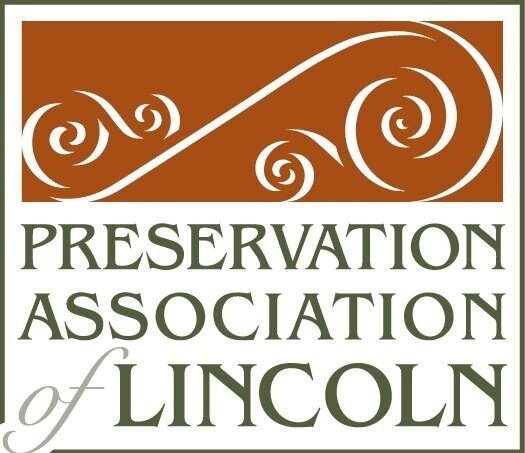Wyuka Cemetery Tour Draws Large Crowd
The tour group, led by Ed Zimmer, assembles in front of Rudge Memorial Chapel at Wyuka Cemetery’s O Street entrance.
Wyuka Historical Society hosted its annual fall tour in Nebraska’s state-chartered Wyuka Cemetery in Lincoln on Sunday afternoon, October 23rd . The tour was guided by Ed Zimmer, retired Historic Preservation Planner with the Lincoln/Lancaster County Planning Department and current member of the Preservation Association of Lincoln (PAL) board of directors.
Responding to a citywide invitation, 70 people joined the free tour on this warm and windy day, with a record-setting temperature of 89 degrees. Complimentary bottled water offered by PAL provided some relief from the heat.
The walking tour, which focused on just part of the 140-acre cemetery, started in front of Rudge Memorial Chapel at the 3600 O Street entrance to Wyuka Cemetery. Construction of the chapel, completed in 1938, was funded by the family of Charles H. Rudge, whose success as a merchant led to the founding of an early Lincoln department store, Rudge & Guenzel, in downtown Lincoln. The chapel, built with Indiana limestone, was designed in the Gothic Revival style by Lincoln architects Davis & Wilson.
Wyuka Cemetery was established by the Nebraska Legislature in 1869, just two years after the founding of Lincoln as Nebraska’s capital city, to serve as a state cemetery. Located in an area of rolling terrain east of the young city, Wyuka Cemetery was platted as a “rural cemetery,” which meant that narrow streets were designed to follow the topography, and land grading within the cemetery was minimized. Today the cemetery is bounded by O, Vine, North 36th , and North 42nd Streets.
Trees and other plantings also were also used to create Wyuka’s rural character. Today, the curving brick streets and remarkable variety of mature trees make Wyuka a quiet environment that dramatically contrasts with the gridiron pattern of streets and urban development that surrounds the cemetery.
The walking tour included stops at grave sites of interest, unique monuments, and significant buildings. Vibrant fall colors on the cemetery’s many majestic trees drew attention to the cemetery’s distinctive landscape design.
Based on Wyuka’s unique status as a Nebraska state cemetery, its many burial sites of diverse individuals ranging from paupers to soldiers, to mayors and governors, as well as its distinctive layout and its forest-like environment, the cemetery was listed in the National Register of Historic Places in 1982.
For self-guided tours, a helpful illustrated guidebook, Wyuka Cemetery: A Driving & Walking Tour, authored by Ed Zimmer and for sale at the Wyuka Funeral Home, Chapel & Office, provides maps and information for 52 significant stops in the cemetery. Directional arrows and 52 numbered markers at curbside along the cemetery’s streets are keyed to the descriptions in the guidebook.
Vibrant fall colors on Wyuka’s majestic trees accentuate the impact of the cemetery’s landscape design.
The Wyuka tour group stops at the Stable, which originally housed work horses needed for groundskeeping, carting, and moving heavy stones.



